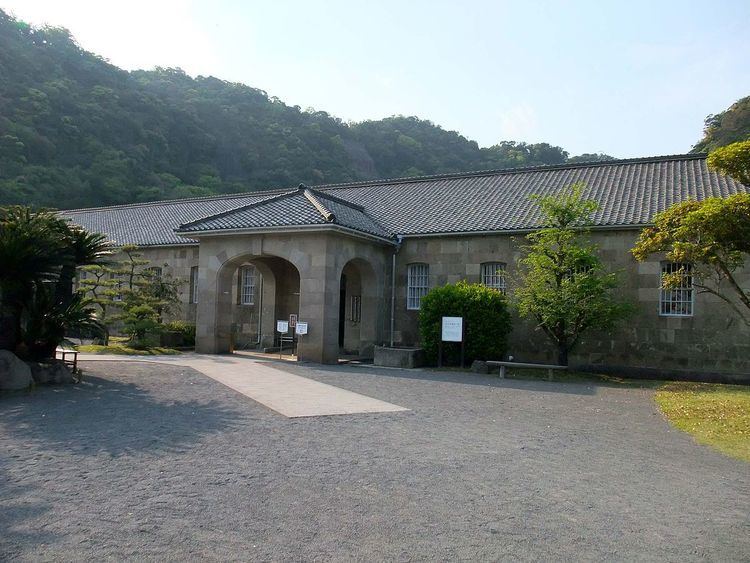Location Japan Criteria ii, iii, iv UNESCO region Asia-Pacific | Type Cultural Reference 1484 Inscription 2015 (39th Session) | |
 | ||
Sites of Japan’s Meiji Industrial Revolution: Iron and Steel, Shipbuilding and Coal Mining (明治日本の産業革命遺産 製鉄・鉄鋼、造船、石炭産業, Meiji nihon no sangyoukakumeiisan seitetsu tekkou, zousen sekitansangyou) are a grouping of historic sites that played an important part in the industrialization of Japan in the Bakumatsu and Meiji periods, and are part of the industrial heritage of Japan. In 2009 the monuments were submitted jointly for inscription on the UNESCO World Heritage List under criteria ii, iii, and iv. The sites were accepted at the 39th UNESCO World Heritage session.
Contents
- 1 Yamaguchi Hagi
- 2 Kagoshima Kagoshima
- 3 Saga Saga
- 4 Iwate Kamaishi
- 5 Nagasaki Nagasaki
- 6 Yamaguchi Shimonoseki
- 7 Fukuoka muta Kumamoto Arao Uki
- 8 Fukuoka Kitakysh
- 9 Shizuoka Izunokuni
- Controversy
- References
Eight areas are registered, with thirty component sites:
(1) Yamaguchi: Hagi
Hagi proto-industrial sites and Tokugawa period cultural setting; Hagi, Yamaguchi Prefecture:
(2) Kagoshima: Kagoshima
Shūseikan pioneering factory complex; Kagoshima, Kagoshima Prefecture:
(3) Saga: Saga
Mietsu shipyard; Saga, Saga Prefecture:
(4) Iwate: Kamaishi
Hashino iron mining and smelting site; Kamaishi, Iwate Prefecture:
(5) Nagasaki: Nagasaki
Nagasaki shipyard facilities, coal mining islands and associated sites; Nagasaki, Nagasaki Prefecture:
(6) Yamaguchi: Shimonoseki
Shimonoseki battle site and Treaty lighthouse; Shimonoseki, Yamaguchi Prefecture:
(7) Fukuoka: Ōmuta; Kumamoto: Arao, Uki
Miike coal mines, railway and ports; Ōmuta, Fukuoka Prefecture, Arao and Uki, Kumamoto Prefecture:
(8) Fukuoka: Kitakyūshū
Yawata steel works; Kitakyūshū, Fukuoka Prefecture:
(9) Shizuoka: Izunokuni
Izu proto-industrial reverberatory furnace; Izunokuni, Shizuoka Prefecture:
Controversy
The inclusion of some of these properties as UNESCO Heritage sites faced concerns and objections from Korea, due to the fact that conscripted Korean civilians and Chinese prisoners-of-war were forced to work under harsh conditions at seven of these sites during Japan's World War II mobilization policies. See Hashima_Island#World_Heritage_Site_approval_controversy for more details.
